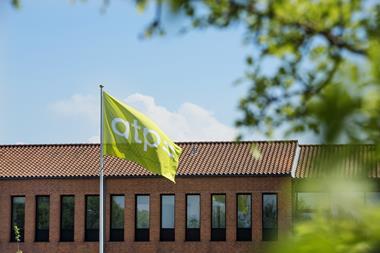The chief executive officer of Denmark’s largest pension fund ATP has countered recent criticism that its approach is too risky, saying that, in most cases, the risk level is extremely low.
ATP, which runs the Nordic country’s population-wide statutory labour-market supplementary scheme, has drawn comment from experts and stakeholders lately at the end of a year of dire investment losses and dwindling overall asset values.
Martin Præstegaard, CEO of the DKK676.9bn (€91bn) pension fund, said in a LinkedIn post: “Several people have raised the question of ATP’s risk in our investment approach. We are very happy to have that discussion.”
ATP was a guaranteed product, and that was reflected in the overall risk profile, he said in the commentary published around the 20 December.
“The risk to the product as a whole is low,” he said, adding: “In the vast majority of cases, it can almost be described as freezing cold – precisely so that we can live up to our guarantees.”
Præstegaard, who became CEO last summer, said that in a small proportion of the portfolio – namely the investment portfolio – ATP did take a lot of risk.
“We do this with our eyes open, and having considered it fully in order to aim for the highest possible pensions for our members,” he said.
ATP has suffered huge losses in 2022 although full-year results have not yet been published.
Between January and September, its total assets lost about 29% of their value, and its return-seeking investment portfolio, which consists of its bonus potential, suffered a total investment loss in the nine months of 45.2%. Much of the reduction in the value of the overall portfolio was down to the effect of higher interest rates on the bond-based instruments dominating its hedging portfolio.
Following the release of ATP’s third-quarter interim report, the institution’s business model was called into question once more by Jesper Rangvid, professor of finance at CBS.
Asked by IPE yesterday to comment on Præstegaard’s defence of the business model, Rangvid said he did believe changes were needed.
Asked about the merits of setting up a special ATP commission to investigate these issues – a course of action that has been mentioned by commentators – Rangvid said he thought this would be a good idea.
ATP did devise a major change to its business model two years ago, which was then implemented at the beginning of 2022, adding a new element described as an “annuity with market exposure”.
Præstegaard said in his pre-Christmas commentary that ATP’s product, ATP Lifelong Pension, played an important role in the overall Danish pension system.
“As a guaranteed lifelong product, it provides basic financial security for Danes’ old age,” he said. For about 40% of all Danish pensioners, it was their only supplement to the national pension, he said.
The ATP pension was particularly important at a time when the markets were going down, he said.
“Because the Danes can continue to be safe: ATP pays out what we have promised – after 2022 as well,” the CEO said.
He acknowledged that ATP made losses in 2022, as had the markets, but added that these losses stood alongside the “historically-large” returns the pension fund had made in the previous years.
“Losing money is never fun,” he said.
“But following the markets is part of the strategy and a condition for a long-term investor – both when things are going well and when things are going badly.
“ATP’s business model was created precisely to withstand this. Also in a year such as 2022,” said Præstegaard.
To read the digital edition of IPE’s latest magazine click here




















